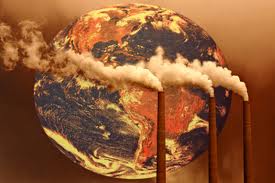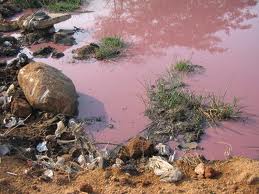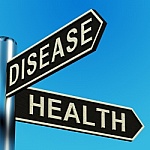Wildlife—and humans—are exposed to toxins via air, water, land, and food. People are responsible for introducing many types of toxins into the environment through industrial emissions, pesticides, medications, fertilizers, oil spills, sewage, garbage, and even lead bullets.
The effects of toxins on wildlife can be difficult to ascertain and, usually, harder to remedy. Once toxins enter the environment, they accumulate in the food chain, affecting all levels of the ecosystem. Understanding the intricacies of these systems and the effects of these contaminants often requires extensive scientific research, and many years and conservation dollars to reverse.
There is no disagreement that we have more toxins in our environment now than 50 or 100 years ago. The disagreement is about the impact of these toxins in our environment.
A U.S. study of umbilical cord blood from 10 newborns found pesticides, chemicals used in consumer products, and by-products from gasoline, garbage and the burning of coal. The newborns averaged 200 contaminants, many of them carcinogens, developmental toxins and neurotoxins.
• “It’s a big red flag,” says Jane Houlihan, vice president of research at the Environmental Working Group in Washington, D.C., which spearheaded the study. “Babies aren’t supposed to be born pre-polluted.”
• Researchers eager to know the health effects of this body burden look at illnesses that are on the upswing. The worldwide prevalence of asthma is rising by 50 per cent, on average, every decade. According to the Public Health Agency of Canada, the age-standardized incidence of testicular cancer was up 54 per cent, breast cancer 19 per cent, thyroid cancer 221 per cent, and non-Hodgkin’s lymphoma (a cancer of the lymphatic system) 83 per cent. • “We know our genetics haven’t changed,” says Houlihan. “With rapid changes in health, scientists suspect environmental exposures play a role.”
• “We know our genetics haven’t changed,” says Houlihan. “With rapid changes in health, scientists suspect environmental exposures play a role.”
We as individuals can do our part to minimize our impact on the environment by driving a less polluting automobile and staying within the speed limit. We can avoid using laundry detergents with phosphates. We can avoid using herbicides and pesticides on our lawn and garden. We can avoid using household cleaning, bath products and beauty products with phthalates, trisodium nitrilotriacetitate, ethoxylated alcohols, silica etc. And we can arm our bodies to resist toxic chemicals by strengthening or cells defence systems with proper nutrition, proper rest and control of emotional stress.
Helping you to clear things up and be healthy
You are here: Home / Toxins in our environment
 |  |
Key articles
List of articles relating to detoxification and stress:
- Liquid Zeolite Food supplement used primarily to remove heavy metals and other toxins efficiently and safely from our bodies.
- Treatment Options for Cancer Patients The author, a Cancer Nurse Specialist with 15 years' experience, provides an overview of cancer treatment choices, both orthodox and alternative.
- Medicinal Mushrooms Many species of medicinal mushrooms have been used in medicine for thousands of years.
Copyright © 2025 · Lifestyle Theme on Genesis Framework · WordPress · Log in